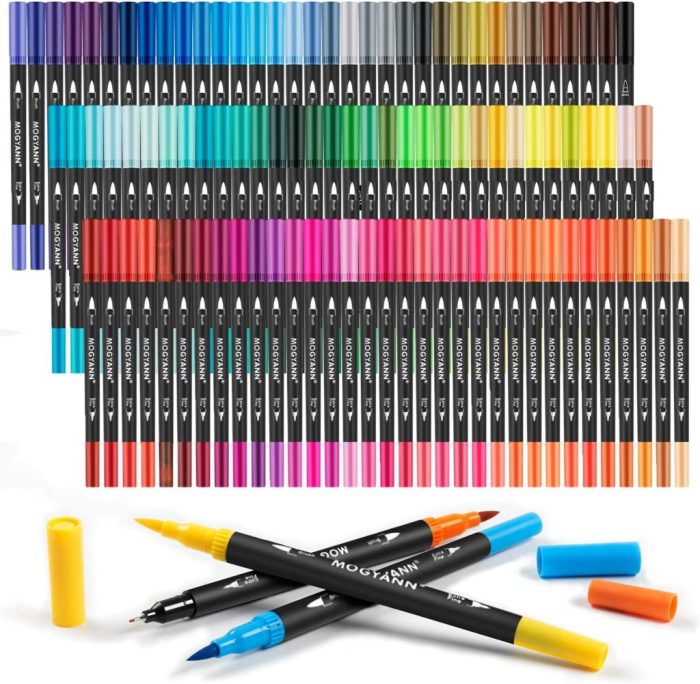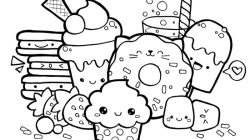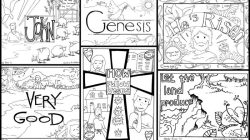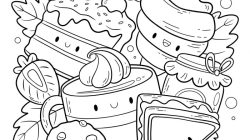Types of Markers for Coloring Books

Best markers for coloring books – Choosing the right markers for your coloring book can significantly impact the final result. Different marker types offer varying levels of vibrancy, blending capabilities, and line control, making certain types better suited for specific coloring styles and paper types. Understanding these differences is key to achieving your desired artistic outcome.
Marker Types and Their Characteristics
Several marker types cater specifically to the needs of adult coloring book enthusiasts. Each possesses unique properties that influence the coloring experience. These properties are crucial for achieving different effects and styles.
Fine-line markers feature very thin nibs, ideal for intricate details and precise lines. They often use water-based inks, which are less likely to bleed through thinner paper. Vibrancy can vary depending on the brand, but generally, fine-line markers offer good color saturation. Blending is typically less effective with fine-line markers due to their limited ink flow.
Broad-tip markers, conversely, possess wider nibs, perfect for large areas of solid color and quick coverage. These are frequently alcohol-based, leading to greater vibrancy and sometimes a higher tendency to bleed. Blending can be achieved by layering colors, though achieving smooth transitions may require practice. The wider nib makes detailed work more challenging.
Brush-tip markers combine the best of both worlds, offering flexibility in line width. The brush tip allows for both thin lines and broader strokes, depending on the pressure applied. Many brush-tip markers are alcohol-based, resulting in vibrant colors and good blending capabilities. However, the flexibility of the brush tip may require some getting used to for precise control.
Alcohol-based markers are known for their intense color saturation and smooth blending. The alcohol base allows for layering and creating beautiful color gradients. However, they can bleed through thinner paper and require a heavier paper weight for optimal results. They also tend to be more expensive than water-based alternatives.
Water-based markers are generally less vibrant than alcohol-based markers but are safer for children and less likely to bleed through thinner paper. They are often more affordable. Blending can be achieved, but it may require more layering and a lighter touch.
Marker Performance on Different Papers
The type of paper used in your coloring book significantly influences how different markers perform. Thinner papers are more prone to bleeding, especially with alcohol-based markers. Heavier papers, on the other hand, provide a smoother surface and minimize bleed-through, accommodating alcohol-based markers more effectively. Textured papers can also impact the appearance of the finished work, with some textures enhancing the marker’s strokes and others potentially obscuring fine details.
Experimentation is key to determining the optimal marker-paper combination.
Comparison of Marker Types
| Marker Type | Price Range | Line Width Options | Suitable for |
|---|---|---|---|
| Fine-line (Water-based) | $5 – $20 | Very fine to fine | Intricate details, small spaces |
| Broad-tip (Alcohol-based) | $10 – $30 | Medium to broad | Large areas, quick coverage |
| Brush-tip (Alcohol-based) | $15 – $40 | Variable, fine to broad | Versatile, blending, both large and small areas |
| Water-based felt tip | $5-$15 | Fine to medium | Beginner, children’s coloring books, less bleed through |
Illustrative Examples of Marker Usage in Coloring Books: Best Markers For Coloring Books

The visual impact of markers in coloring books is significantly enhanced by thoughtful color selection and skillful application of shading techniques. The versatility of markers allows for a wide range of artistic expression, transforming simple line drawings into vibrant and detailed works of art. This section will explore specific examples of how different marker types and techniques contribute to the overall aesthetic appeal of a completed coloring page.
Color Combinations and Shading Techniques
Strategic color choices and shading methods are fundamental to creating depth and realism in marker-based coloring book artwork. For instance, a sunset scene might utilize warm hues like oranges, yellows, and reds, with subtle gradients created through layering and blending. Darker shades could be strategically placed to represent shadows and depth, adding dimension to the clouds and landscape. Conversely, a serene underwater scene might employ cool blues, greens, and purples, with lighter shades used to highlight areas where light penetrates the water.
Techniques such as stippling (creating texture through small dots) can simulate the texture of coral or the scales of a fish. Using a combination of light and dark blues, and adding touches of purple and green for algae, creates a very believable underwater environment. The careful application of these techniques elevates the image beyond a simple coloring book page.
Marker Techniques and Their Effects, Best markers for coloring books
Layering, blending, and stippling are key techniques that significantly influence the final artwork. Layering involves applying multiple colors sequentially, allowing the underlying color to subtly affect the final hue. Blending involves seamlessly merging colors together, often achieved by using alcohol-based markers that allow for smooth transitions. Stippling, as mentioned earlier, is a technique of applying small dots of color to build up texture and create a sense of depth.
These techniques can be combined for even more complex and interesting effects. For example, layering warm tones and then blending them softly creates a realistic glow, while stippling can add texture to a subject’s hair or fur.
Examples of Coloring Book Pages
Page 1: A Tropical Bird This page utilizes alcohol-based markers with a broad range of colors. The bird’s plumage is rendered using multiple layers of blues, greens, and yellows, creating a vibrant and realistic effect. Blending is used to soften transitions between colors, while stippling is employed to add texture to the bird’s feathers. The background features a gradient of warm oranges and yellows, created by layering and blending, giving the impression of a tropical sunset.
The overall effect is one of vibrancy and depth, showcasing the capabilities of alcohol-based markers for creating realistic depictions.
Page 2: A Detailed Flower This page demonstrates the capabilities of dual-tip markers, utilizing both fine and broad tips to create intricate details and bold Artikels. The fine tip is used to meticulously render the delicate veins in the petals, while the broad tip is used for the overall shape and shading. Different shades of pink, purple, and yellow are used to create a gradient effect, giving the flower a three-dimensional quality.
The use of layering and blending techniques further enhances the visual depth. The overall result is a highly detailed and visually appealing floral illustration showcasing the versatility of dual-tip markers.
Page 3: An Abstract Design This page showcases the expressive potential of water-based markers. The artist uses a variety of techniques including layering, blending, and splatter effects to create a dynamic and abstract composition. Vibrant colors are used freely, with little emphasis on realism. The use of water-based markers allows for a more fluid and less controlled approach, resulting in a spontaneous and expressive piece of art.
The emphasis is on the interaction of colors and the interplay of textures. The result is an energetic and exciting design that explores the expressive possibilities of water-based markers and allows for unique artistic freedom.
Choosing the right markers significantly impacts the vibrancy of your coloring book experience. For truly stunning results, consider the fine-point detail you can achieve, especially when working with intricate designs like those found in a beautiful word coloring book. The paper quality of your chosen book will also influence your marker selection, so keep this in mind when deciding on the best markers for your coloring book project.










